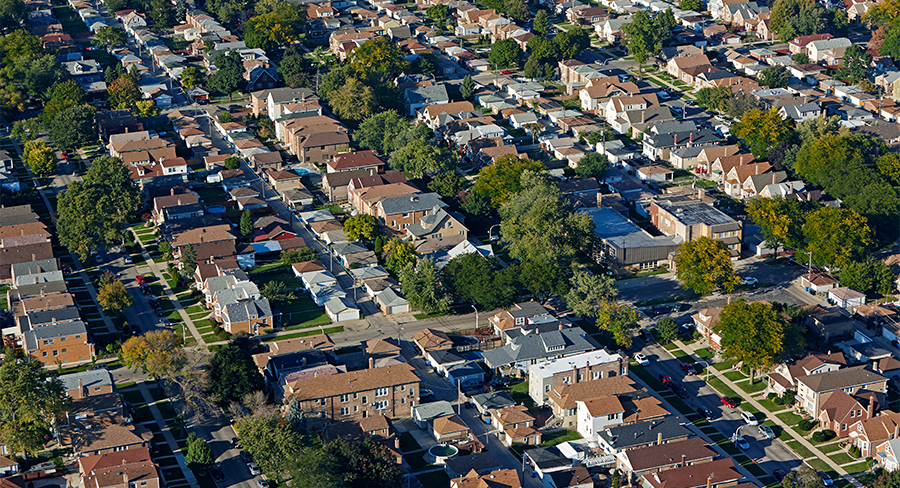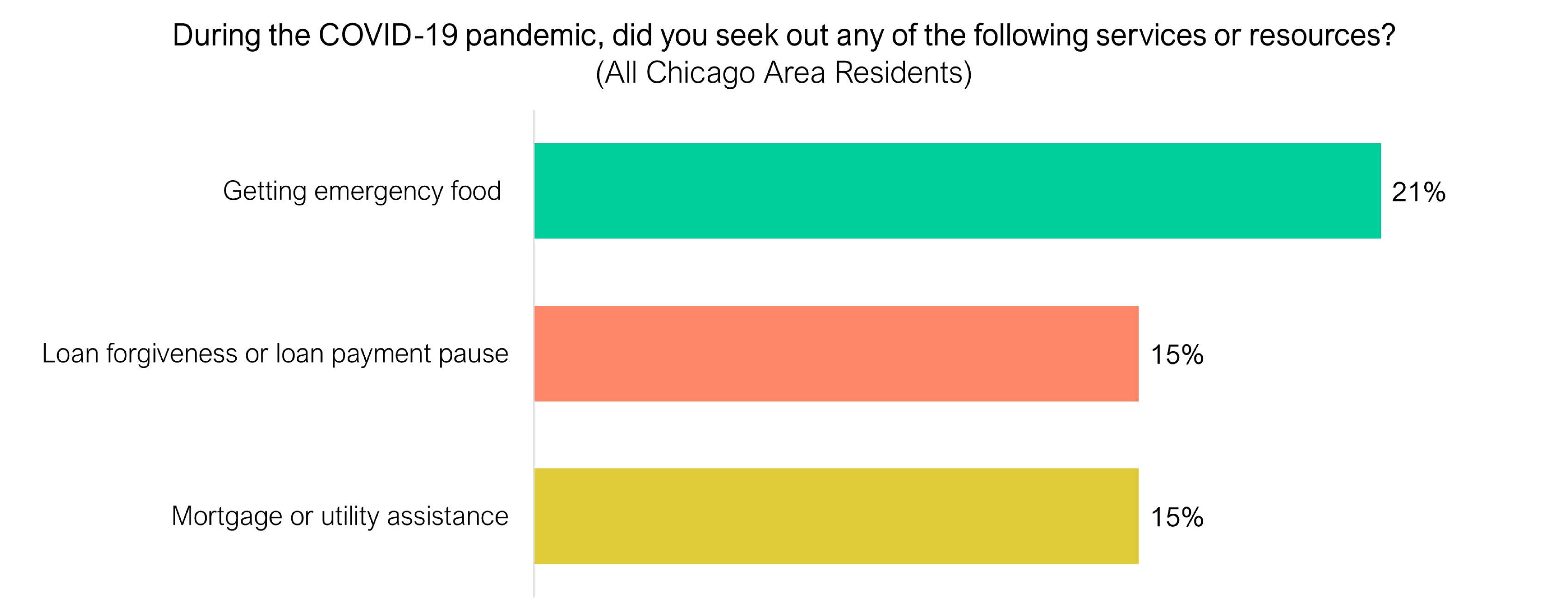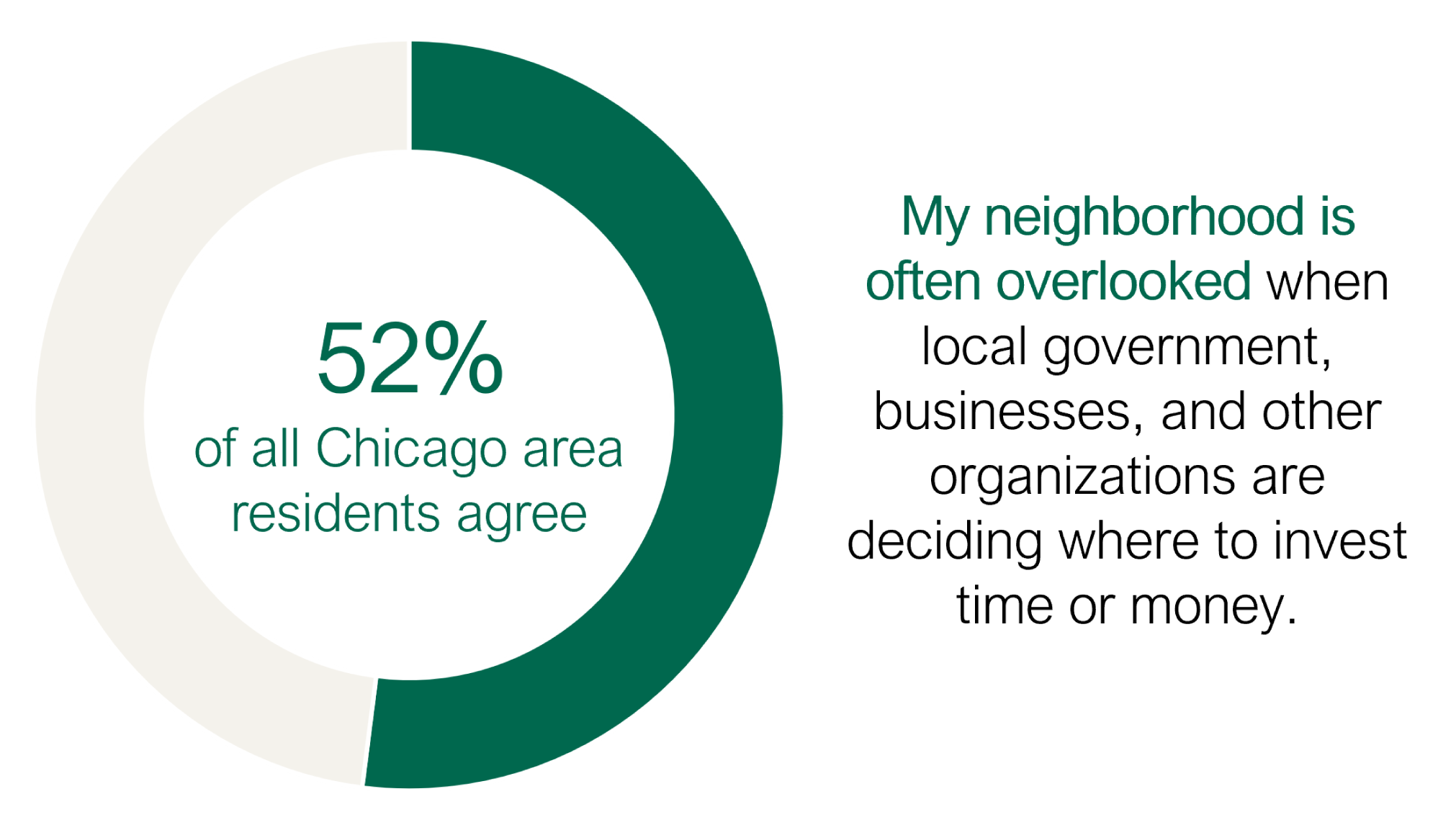MacArthur and The Harris Poll surveyed Chicago area residents on economic inequality, civic resources, and the COVID-19 recovery.

MacArthur teamed up with The Harris Poll to understand how Chicagoans’ experiences with neighborhood services, gentrification, housing, local government, and citywide investment initiatives are affected by economic inequity. What we found is that the COVID-19 pandemic, especially, has forced the residents of Chicago to deal with the consequences of inequity. Today, the city needs leadership that will address unequal wealth distribution and unequal access to resources to ensure that Chicago residents have a brighter post-pandemic future.
Key Findings:
- 55 percent of all Chicago area residents consider themselves to be members of the middle class.
- 80 percent of all Chicago area residents say they can afford the essentials every month, but 37 percent do not have money left over after paying for essentials. Just half are comfortable with the level of emergency savings that their household currently has set aside.
- Approximately 1 in 5 Chicagoans sought emergency food supplies, mortgage or utility assistance, or loan forgiveness/payment pauses during the pandemic.

Download accessible chart data ›
- Most area residents are proud to live in their current neighborhood (82 percent). Even so, approximately one-third (31 percent) of all Chicagoland residents have considered moving away from the greater Chicago area in the past year.
- 34 percent of all area residents agree that gentrification poses a larger threat to their neighborhood than other neighborhoods in Chicago. Nearly half of all area residents (46 percent) say access to affordable housing is worse in Chicago than in other U.S. cities.
- 52 percent of all area residents feel that their neighborhood is often overlooked when local government, businesses, and other organizations are deciding where to invest time or money.

- Only 45 percent of all area residents say their alderman does a good job advocating for their neighborhood.
- Awareness of at least one citywide or neighborhood-level investment initiative is moderate (43 percent), but an accurate understanding of the intent of such initiatives is much lower (5 percent).
Download the full Harris report on economic inequity ›



